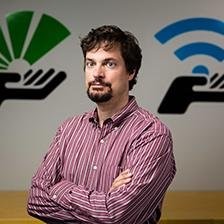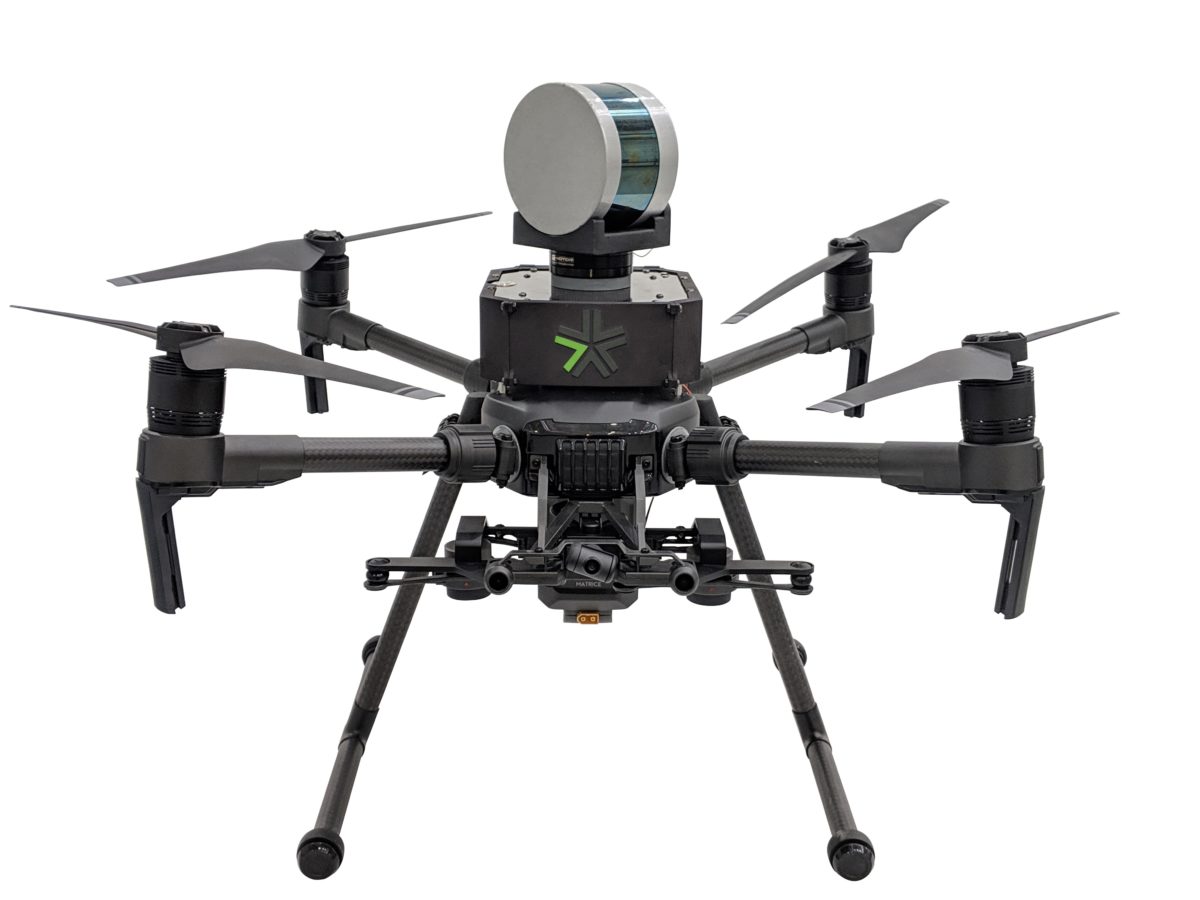Cryptocurrency. Gene editing. 5G. Drones. We hear — and report on — these terms often.
But for the average person who’s not well versed in these topics, they might just sound like tech-y jargon, or technology that exists solidly in the future. On the latter point: Yes, but not exclusively.
In a year when Bitcoin is much more than a buzzword, gene-editing tool CRISPR is influencing COVID-19 research, 5G is frequently flashing on our screens and a kid you know probably got a drone for Christmas, these concepts must be widely understood.
Inspired by “Explain like I’m 5” genre of subreddit, Technical.ly spoke to four experts about what these technologies are and what they mean for our futures.
Gene editing, the “genetic spellchecker”
Dr. Eric Kmiec, the director of the ChristianaCare Gene Editing Institute in Newark, Delaware, says gene editing is a form of genetic medicine with the goal of correcting DNA mutations that lead to inherited disorders or cancer. Diseases such as sickle cell disease, cystic fibrosis and Pompe’s disease have been the early targets for clinical trials. In particular, the sickle cell disease trials going on have shown great promise.
Kmiec said gene editing could be looked at as a “genetic spellchecker.” Chromosomes are like the words in a sentence, and gene editing can help correct those words to make that sentence coherent, or in this case, healthy without the mutant or misspelled gene in the chromosome.
“Let’s say that the first word of the sentence is misspelled, that is the first gene along a string of genes in a chromosome,” he said. “We can design a CRISPR molecule to fix the misspelling of the gene in the chromosome with high precision and high efficiency. So far, the challenge has been that the CRISPR tool may occasionally act to aggressively and secondarily alter a single letter in the last word of the sentence, or a single base in the last gene along the string in the chromosome.”

The field of gene editing is more than 30 years old, but Kmiec said the emergence of gene-editing tool CRISPR has made gene editing more accessible to people of various backgrounds.
“Previously, the efficiency and precision with which mutations were repaired in the human chromosome were at a level that was not clinically relevant,” he said. “Today, CRISPR is changing that and molecular geneticists now believe that this tool will help us translate gene editing into a clinical reality.”
The future of gene editing should also include a humanistic side because it is not just about the technology. It’s ultimately about the patient.
Kmiec sees gene editing as an opportunity to change how health care is delivered to people. With many genetic diseases and forms of cancer currently lacking successful treatments, repairing genes at their roots could be the future of healthcare. With gene editing, healthcare pros will be able to attack health issues at their core.
Making this service equitable for all members of society is central to Kmiec’s work at the Gene Editing Institute.
“One big challenge lies in making sure that all socioeconomic levels of patients have access to such breakthrough technologies and that it is not simply reserved for those who can pay the price,” he said. “At ChristianaCare’s Gene Editing Institute, we have integrated a strong diversity and ethical approach to patient care as we further develop these gene editing technologies. The future of gene editing should also include a humanistic side because it is not just about the technology. It’s ultimately about the patient.”
5G, the faster cell technology
Many popular commercials from leading cellular service companies like AT&T tout 5G as the latest achievement in cellular technology. While it is an advancement over its predecessor, Connectify cofounder and CEO Alexander Gizis said it’s not as large of a step forward as may be advertised.
5G is the most current generation of cellular tech and standards, following 4G, which gave cell phone users LTE. LTE was an integral part of the process that gave us internet on our smartphones and tens of megabits to support phone calls and texting.

“5G is taking it to the next level of new technology,” said Gizis, whose Philly-based networking software company makes an app to boost your mobile connection. But “it’s not a disruptive technology. The innovator dilemma is to create all these opportunities for startups and 5G is mostly sustaining tech to help Verizon, AT&T and Apple do smartphone things even better.”
Gizis explained that while 5G allows for faster speeds and better latency — the time between user action and response — its success is predicated upon the certain number of frequencies that cellular companies are allowed to employ.
“The good bands like 1800 megahertz are full,” he said. “When you run 5G there is only so much bandwidth.”
Gamers and fans of video calls are most likely to notice the difference between 4G and 5G service. Gizis said that 5G sends big “blocks” of data, allowing for faster responses in gaming. He predicts that a lot more smart devices like the Apple Watch will emerge in the next couple of years as technologists better understand and have the technology capable of taking advantage of 5G.
Drones, on their way to autonomy
Exyn Technologies COO Ben Williams defines drones by their independence relative to tech systems. Regular drones are remotely controlled systems with active pilots for all or most of its actions. The term drone generally refers to a non-thinking device reliant upon direct input from a human operator or pilot.
When systems gain the capability to respond to their environments is where things get interesting. According to Williams, as drones become more autonomous, they begin to take on the capabilities of a robot.
“The more clear-cut case is where a system is completely autonomous and no pilot is involved at any point of the flight; this type of autonomous system is a robot,” he said.
Williams, whose Pennovation-based company uses drones and ground-based robots to collect data from places where GPS isn’t accessible, said the significance of drones in terms of the future of technology exists in their potential as autonomous systems. He considers these systems to be the “next obvious success of software” that will enable digital processing.
“Many modern companies are digital-first companies that can take advantage of massive distributed computing resources and highly advanced algorithms and systems to utilize data from across every aspect of their companies,” he said. “However these benefits are only within reach for those companies (like Google, Facebook, etc.) that can get all of that data into a computer system, and where the actions they want to take are digital in nature.”

While digital-first companies will be at an advantage in employing autonomous systems, Williams said more traditional and analog companies that mostly exist in the physical world will have a harder time making the adjustment. Getting input data is difficult and acting upon can be even harder.
Exyn uses autonomous systems to gather massive datasets for analog industries that include mining, construction and logistics. Autonomous warehouse robots and delivery systems are seeing significant growth as their technology becomes more efficient.
Williams expects to see commercial and industrial companies begin to acquire thousands of these autonomous systems to collect data and take action based on the data acquired. Beyond digital systems, Exyn is already using robots to perform in dirty and dangerous environments.
“One common use case for Exyn here is in underground mines where survey teams simply can’t access some of the very dangerous environments without autonomous robots,” he said. “These systems allow the survey teams to greatly expand their access to previously inaccessible or very dangerous areas of the mines.”
Cryptocurrency, the decentralized currency
Mike McCoy, associate director of emerging technologies at health insurance company Humana, is passionate about the rise of cryptocurrency for good: He lectures on blockchain for health care, organizes the local Blockchain in Healthcare Today meetup and is the former Philly-based campus engagement lead at Brooklyn blockchain company ConsenSys.
He defines cryptocurrency as a monetary, digital asset that can be exchanged for value, like the U.S. dollar. It is protected by cryptography, and anyone worldwide can access it with a digital tool like a mobile device, laptop or browser using a digital node, or server. It is the first decentralized currency with no owner to be exchanged for goods and services in human history, he said.

McCoy said that cryptocurrency is the internet’s currency and provides more freedom than fiat (government-issued) currency like the American dollar. Just as tech startups have built profitable enterprises off of intangible concepts, cryptocurrency allows anyone to exchange value regardless of their race, ethnic background, gender or national origin.
Because cryptocurrency is sovereign resistant and designed to be decentralized, it does not need the power of any state or geographic body to enforce its value. McCoy said this allows for it empower the people that use it.
“It allows for trustless transactions between humans without some king or authority or government or corporation having to be the validator of a transaction,” he said. “It’s able to distribute wealth creation, wealth storage, and wealth protection from the state. And that’s what cryptocurrencies really enable.”
The currency becomes more valuable as people entrust more of their time, computational power and native currencies into it.
Bitcoin is currently the world’s best-known form of cryptocurrency, and McCoy considers it the digital gold standard. According to McCoy, people can divide up shares of Bitcoin to as many people as possible, as opposed to gold, which has a physical limit of who and how many people can have access to it. Its possibilities as a programmable currency also make it more flexible in distributing to others.
Privacy is one of cryptocurrency’s advantages but also brings its own issues, McCoy said. While parts of it are private, it is not completely private and is barely a decade old, still leaving much to the imagination for people interested in its use.
“It’s only from 2009,” he said. “People don’t know if it’ll be around forever. But every year Bitcoin and cryptocurrency survives and goes through one of the various challenges facing it and the currency becomes more valuable as people entrust more of their time, computational power and native currencies into it.”







